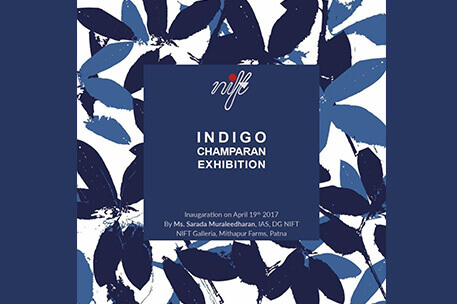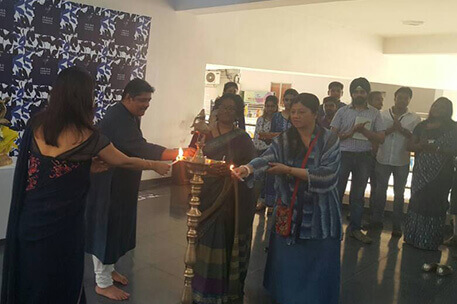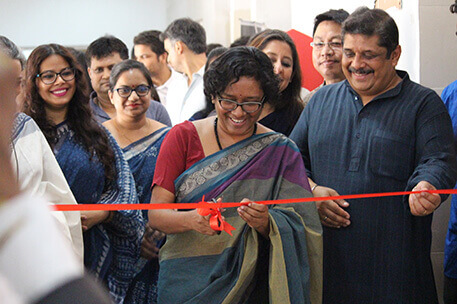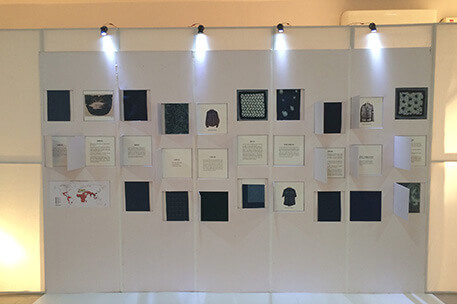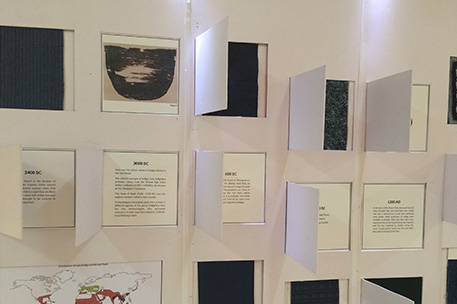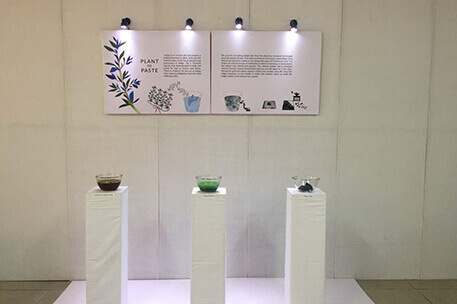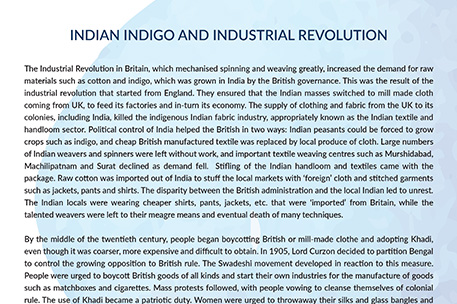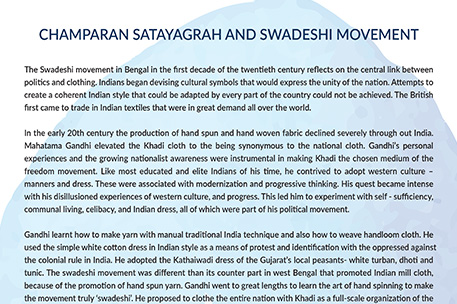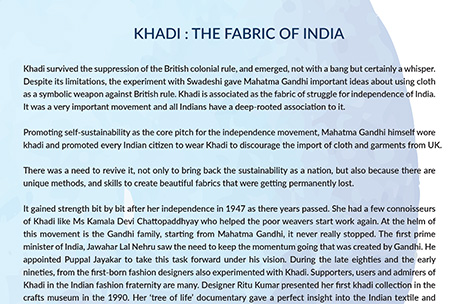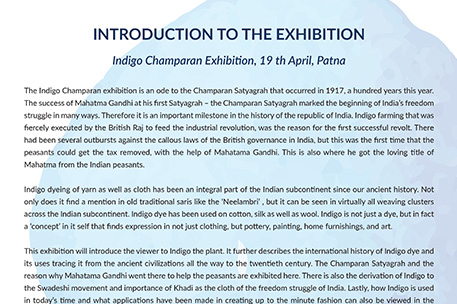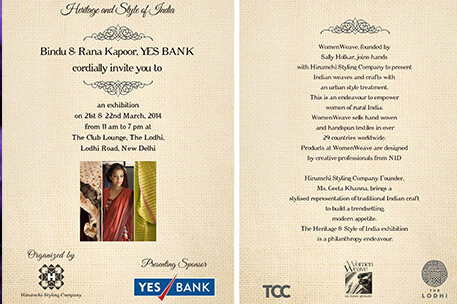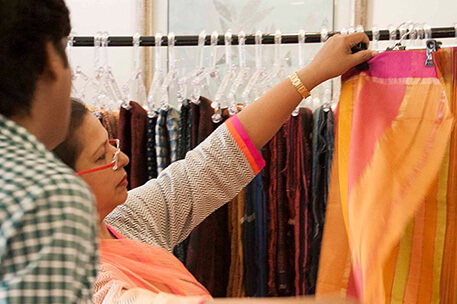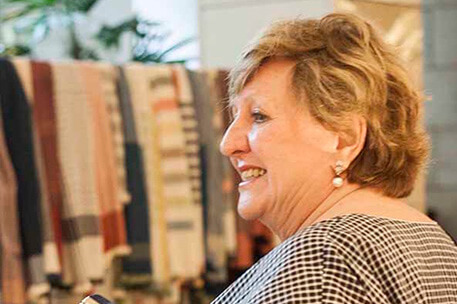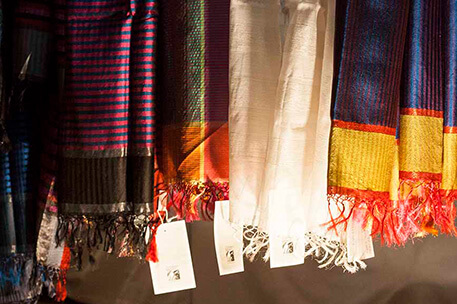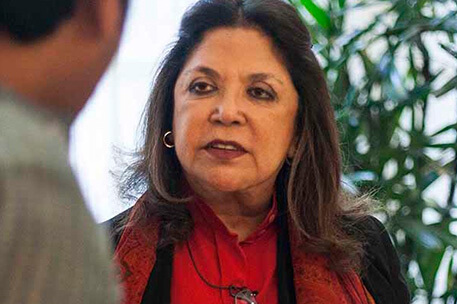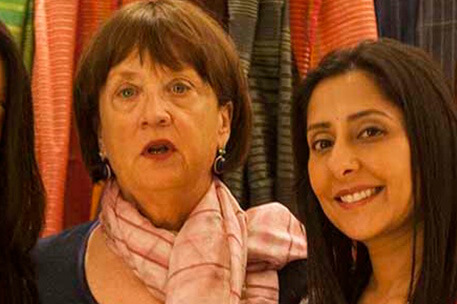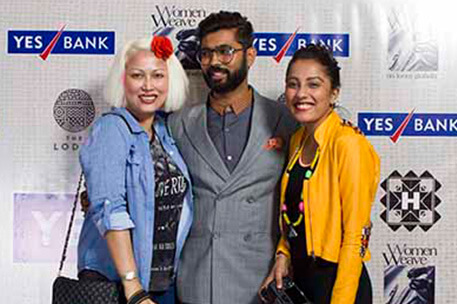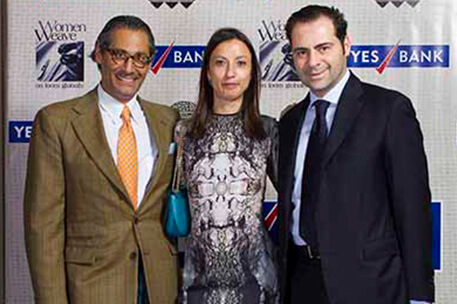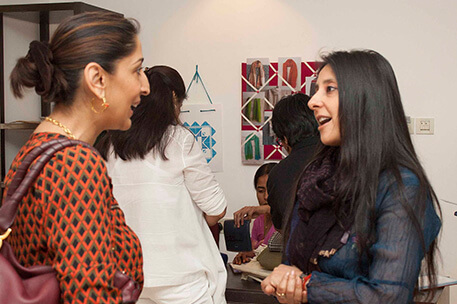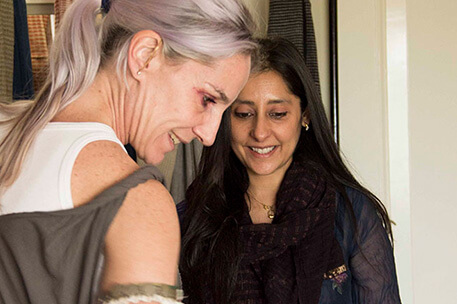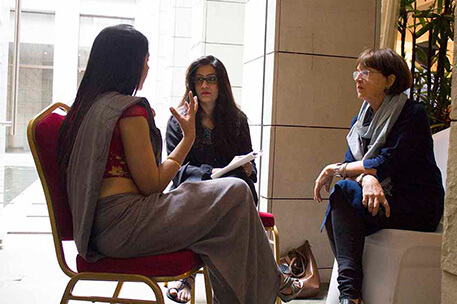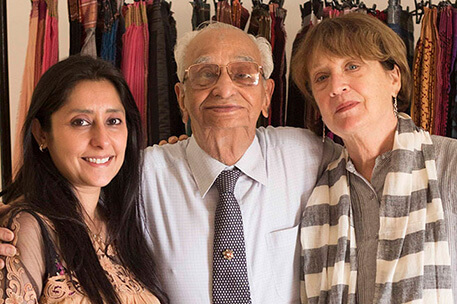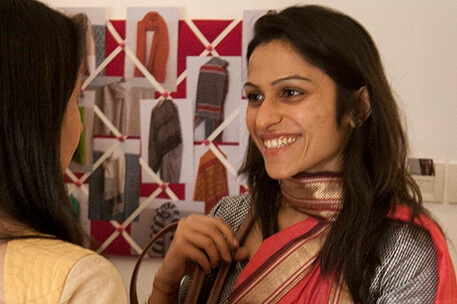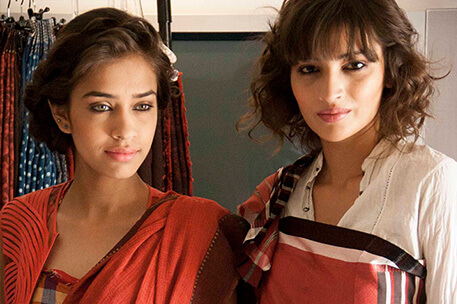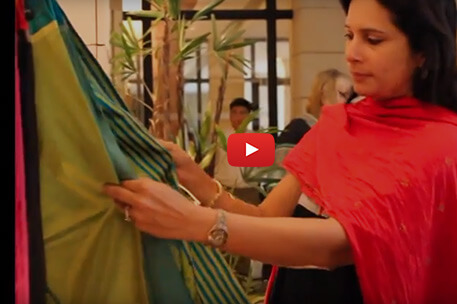Exhibitions
Indigo Champaran Exhibition
The Indigo Champaran exhibition is an ode to the Champaran Satyagrah that occurred in 1917, a hundred years this year. The success of Mahatma Gandhi at his first satyagrah – the champaran satyagrah marked the beginning of India’s freedom struggle in many ways. Therefore it is an important milestone in the history of the republic of India. Indigo... farming that was fiercely executed by the British raj to feed the industrial revolution, was the reason for the first successful revolt. There had been several outbursts against the callous laws of the British governance in India, but this was the first time that the peasants could get the tax removed, with the help of Mahtama Gandhi. This is also where he got the loving title of Mahatma from the Indian peasants.
Indigo dyeing of yarn as well as cloth has been an integral part of the Indian subcontinent since our ancient history. Not only does it find a mention in old traditional saris like the ‘Neelambri’ , but it can be seen in virtually all weaving clusters across the Indian subcontinent. Indigo dye has been used on cotton, silk as well as wool. Indigo is not just a dye, but infact a ‘concept’ in itself that finds expression in not just clothing, but pottery, painting, home furnishings, and art.
This exhibition will introduce the viewer to Indigo the plant. It further describes the international history of Indigo dye and its uses tracing it from the ancient civilizations all the way to the twentieth century. The Champaran Satyagrah and the reason why Mahatama Gandhi went there to help the peasants are exhibited here. There is also the derivation of Indigo to the swadeshi movement and importance of Khadi as the cloth of the freedom struggle of India. Lastly, how Indigo is used in today’s time and what applications have been made in creating up to the minute fashion can also be viewed in the display by the Weavers source centre as well as the National Institute of technology’s resource centre.
HSIF Event
Heritage and Style of India is a philanthropy project by Hirumchi Styling Company. This event aims at creating an appetite for endangered and unique arts and crafts of the Indian Subcontinent worldwide. Heritage and Style of India is a platform that offers 'style application' to threatened and unique Indian arts and crafts. Geeta Khanna took the vision... to introduce handloom into fashion application. It is a great endeavour, now being propelled into a movement on its own called the Heritage Style of India. An event that is an inclusion of design from the unique places across India that offers the most exquisite arts and crafts. Heritage and Style Of India is a unique platform simply because it ‘edits’ the offering spread by each regional handicraft and arts of the Indian subcontinent. “It was a thought that emerged in my visit to Maheshwar, for research of my book that is soon to be released on the Style of India” What started as a research on various drapes and sari styles of India, ended up as an effort to push the works of various ngo’s in the forefront.
“Handloom and handicrafts has been admired for many decades and some people also buy handicrafts, but mostly it is not considered as a fashion statement, and that is what I am changing for the handloom sector in India”, says Ms Geeta Khanna, Founder and Principal Director, Hirumchi Styling Company.
Hirumchi Styling Company presented the Heritage and Style of India event for the first time in April 2013 in the Claridge’s Hotel, Aurangzeb Road, New Delhi, India. It presented the handmade saris, scarfs and stoles by Women Weave Charitable Trust, founded and lead by Sally Holkar. Hundreds of weavers have been able to support their families and plan for the future through the efforts of WomenWeave Charitable Trust. The event was graced and supported by Kumari Selja, Chandresh Kumari Katoch Minister of Culture, Mr Muzzafar Ali,Sarah Pilot, Priya Paul,Rajeev Sethi, Pramod KG, Francis Wacziarg and many more.
Its second event was held at the Club Lounge in the Lodhi Hotel, Lodhi Road, New Delhi on the 21st and the 22nd of March, 2014. This event was sponsored and hosted by Mrs and Mr Rana Kapoor of Yes Bank along with Ms Anita Bajaj, Director WHO for India. The event was extensively covered in the Indian media including the Indian Vogue. The event was graced and supported by Ashish Soni, Ms Robyn, Ms Rajika Puri, Mr Peter D’Scoli, Ms Piya Singh of the DLF group, Ms Anita Bajaj, Mrs Akkoi, Mrs Chandresh Kumari Katoch, and Many more.
